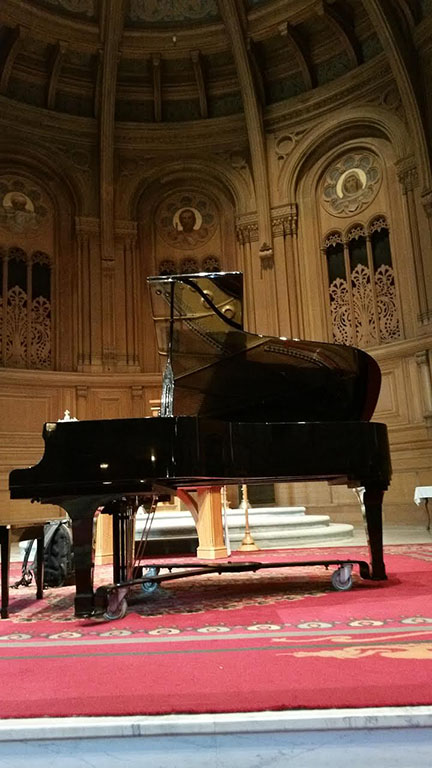
Voicing
Voicing is about tone: bright, mellow, dark, muted, bell like. Many adjectives have been used to describe the different tones accessible in a good piano. Given a good piano and some time to work with, a skilled voicer can achieve these qualities by manipulating the hammers with sandpaper, needles, wire brushes, hammer irons, steam, lacquer, acetone and plastic, and other methods.
Before any voicing of the piano takes place, the owner needs to decide what type of tone he/she is looking for. For the first-time buyer, it is important to try out as many pianos as possible in order to make an appropriate selection. Buying a piano just because it looks good and the seller has promised that it can be voiced in your house to sound “just like a Steinway” is almost always a mistake. Choose a piano based on what it sounds like, not what someone promises it will sound like! Every person listens with different ears, and it is the person who plays the piano who should decide what sound is right for him or her.
Then comes location. Where will the piano be placed? On a hardwood floor? In a room with wall-to-wall carpet? In a hall with marble floors and cathedral ceilings? Not all pianos are suited to all locations. I generally recommend a piano with a softer, sweeter sound for rooms with many hard surfaces and little carpeting to baffle the sound. A livelier tone might suit a room with rugs.
Once the piano has been chosen, delivered and situated, a short period of climatic adjustment and settling is recommended. A week or two is usually adequate. After the initial period of acclimatizing, the piano should be tuned. A pitch adjustment—a coarse tuning—might be necessary first, then a fine tuning. Strings should be level, hammers mated to strings, and the piano regulated: to create an even tone, there must be evenness in the touch and hammer-string interface.
Back to Top
